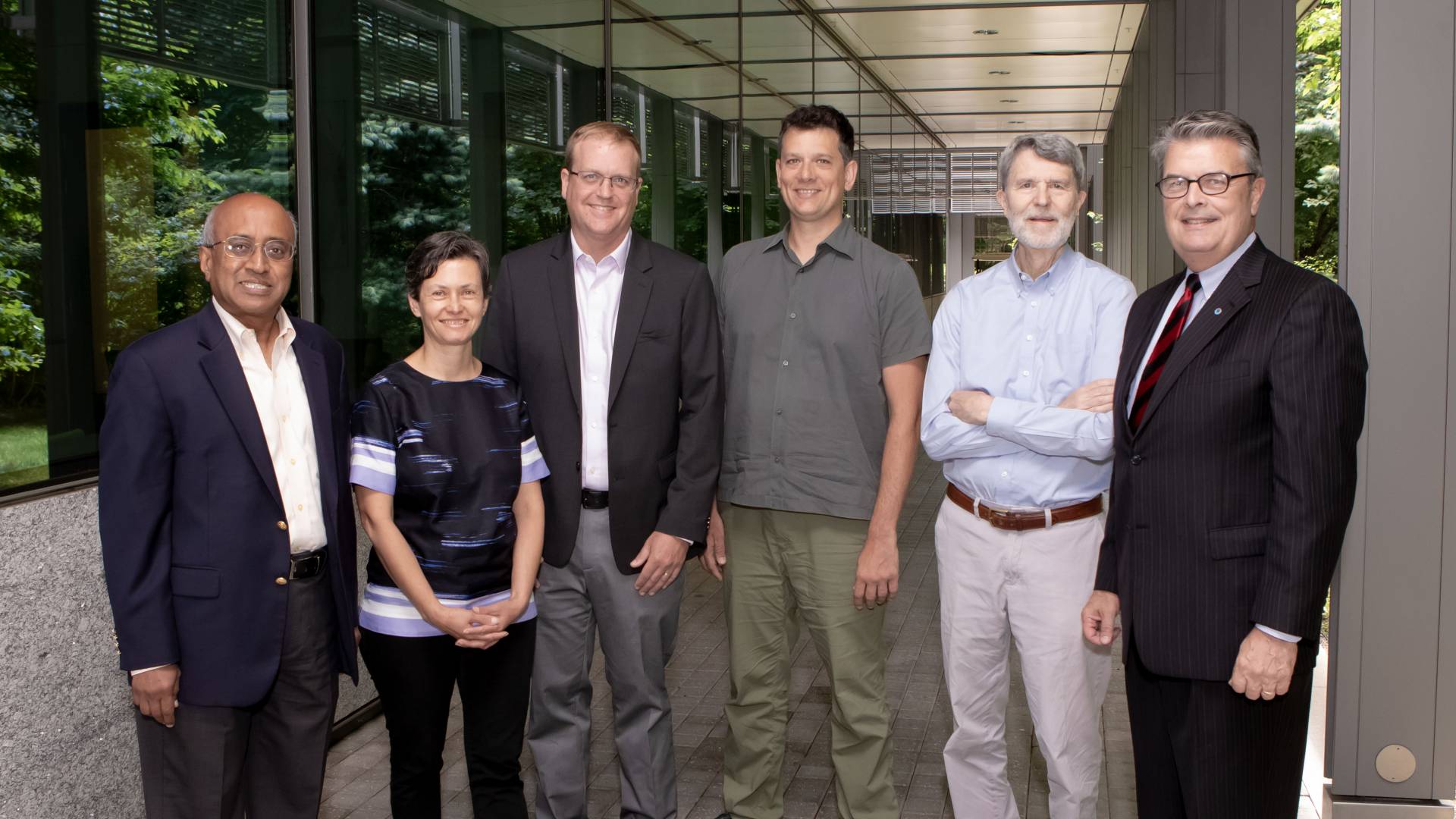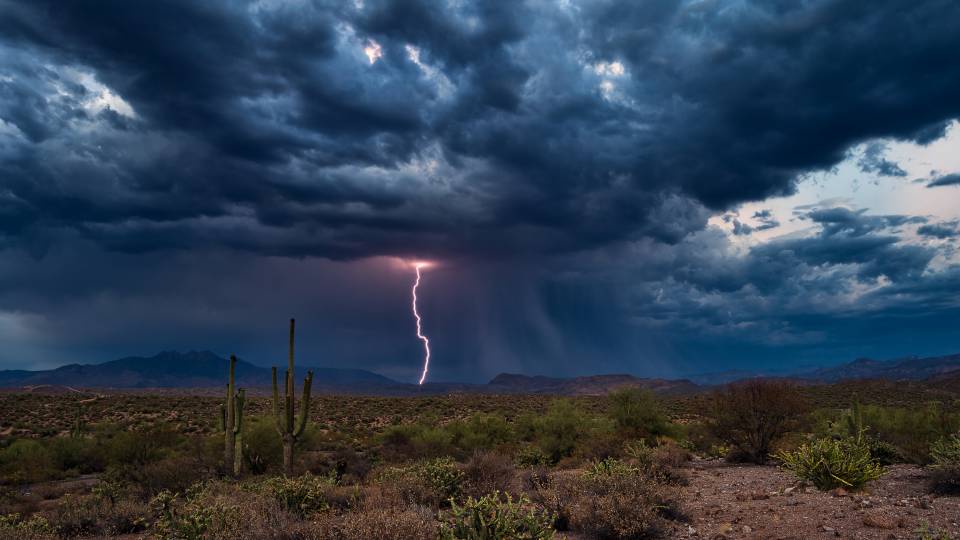Princeton University and NOAA’s Geophysical Fluid Dynamics Laboratory will form a cooperative research institute to focus on Earth system research, with an emphasis on problems of relevance to society, including extreme weather and impacts on marine ecosystems, water availability and air quality. Pictured from left to right are V. “Ram” Ramaswamy, director of NOAA’s Geophysical Fluid Dynamics Laboratory; Sonya Legg, senior research oceanographer in atmospheric and oceanic sciences: Whit Anderson, deputy director of GFDL; Gabriel Vecchi, professor of geosciences and the Princeton Environmental Institute; Jorge Sarmiento, Princeton's George J. Magee Professor of Geoscience and Geological Engineering; and Craig McLean, assistant administrator for Oceanic and Atmospheric Research at NOAA.
Researchers at Princeton University and NOAA’s Geophysical Fluid Dynamics Laboratory (GFDL) have been awarded up to $40 million over five years to fund a new cooperative institute that focuses on Earth system research.
The Cooperative Institute for Modeling the Earth System (CIMES) aims to understand and predict the Earth's climate system across time scales from days to decades, on local to global scales, and with particular focus on extreme weather and problems of relevance to society, including impacts on marine ecosystems, drought and air quality.
The new institute enables Princeton and GFDL to continue collaborative work begun under the Cooperative Institute for Climate Science, founded with funding from the National Oceanic and Atmospheric Administration (NOAA) 15 years ago. GFDL is located about three miles from Princeton University in Plainsboro, New Jersey.
"This decision enables us to continue groundbreaking research that Princeton University and GFDL have been doing for the past 50 years on the Earth system," said Jorge Sarmiento, Princeton's George J. Magee Professor of Geoscience and Geological Engineering. "Through this collaboration, the University contributes academic expertise that advances the study of a broad Earth system model that incorporates biogeochemistry to improve our understanding of the Earth and its future."
Sarmiento will be director of the new institute. Gabriel Vecchi, professor of geosciences and the Princeton Environmental Institute, will be the deputy director. Sonya Legg, senior research oceanographer in atmospheric and oceanic sciences, will serve as the associate director.
"Our cooperative institutes are critical to NOAA’s ability to address emerging needs and train the next generation of researchers," said Craig McLean, assistant NOAA administrator for Oceanic and Atmospheric Research. "The Cooperative Institute for Modeling the Earth System at Princeton University offers world-class breadth and depth of scientific expertise that would be impossible to recreate inside a federal agency alone."
The institute combines GFDL’s expertise in numerical climate modeling, which involves the use of computer models to predict climate change, with Princeton’s world-renowned scientists and engineers as well as public policy experts who shape national and international responses to Earth system change.
The research will involve graduate students and postdoctoral researchers at both institutions, providing outstanding opportunities to train the next generation of leaders in Earth system sciences through the graduate and postdoctoral programs in Princeton's Program in Atmospheric and Oceanic Sciences (AOS). The institute will also broaden the participation of underrepresented groups in Earth system science through summer internships, visiting faculty exchange fellowships and research collaborations with a diverse range of institutions.
The new institute also provides a bridge between NOAA-GFDL and Princeton University and the wider academic community.
CIMES research will address the following themes:
- Earth system modeling: The institute will improve and develop numerical models to simulate the climate and Earth system. These models include the dynamical, physical, chemical and biological components of the atmosphere, ocean and land, and interactions between them.
- Seamless predictions across time and space: The institute will apply Earth system models to predictions on time-scales from days to centuries and over spatial scales from local to global scales. The studies will include a focus on extreme weather as well as the predictability of different weather and climate events.
- Earth system analysis and applications: The institute will use Earth system models to understand the impacts of environmental variations on problems of relevance to society, including marine ecosystems, water availability and air quality.
NOAA selected CIMES for funding after an open, competitive evaluation process. The award provides up to $40 million over five years with the potential to renew for another five years based on successful performance.
CIMES will be one of 16 Cooperative Institutes that NOAA supports to conduct research and provide educational programming to students and postdoctoral associates in oceanic and atmospheric science.






